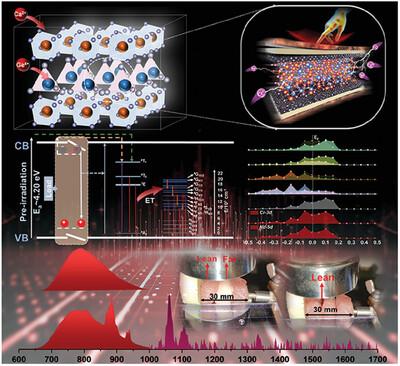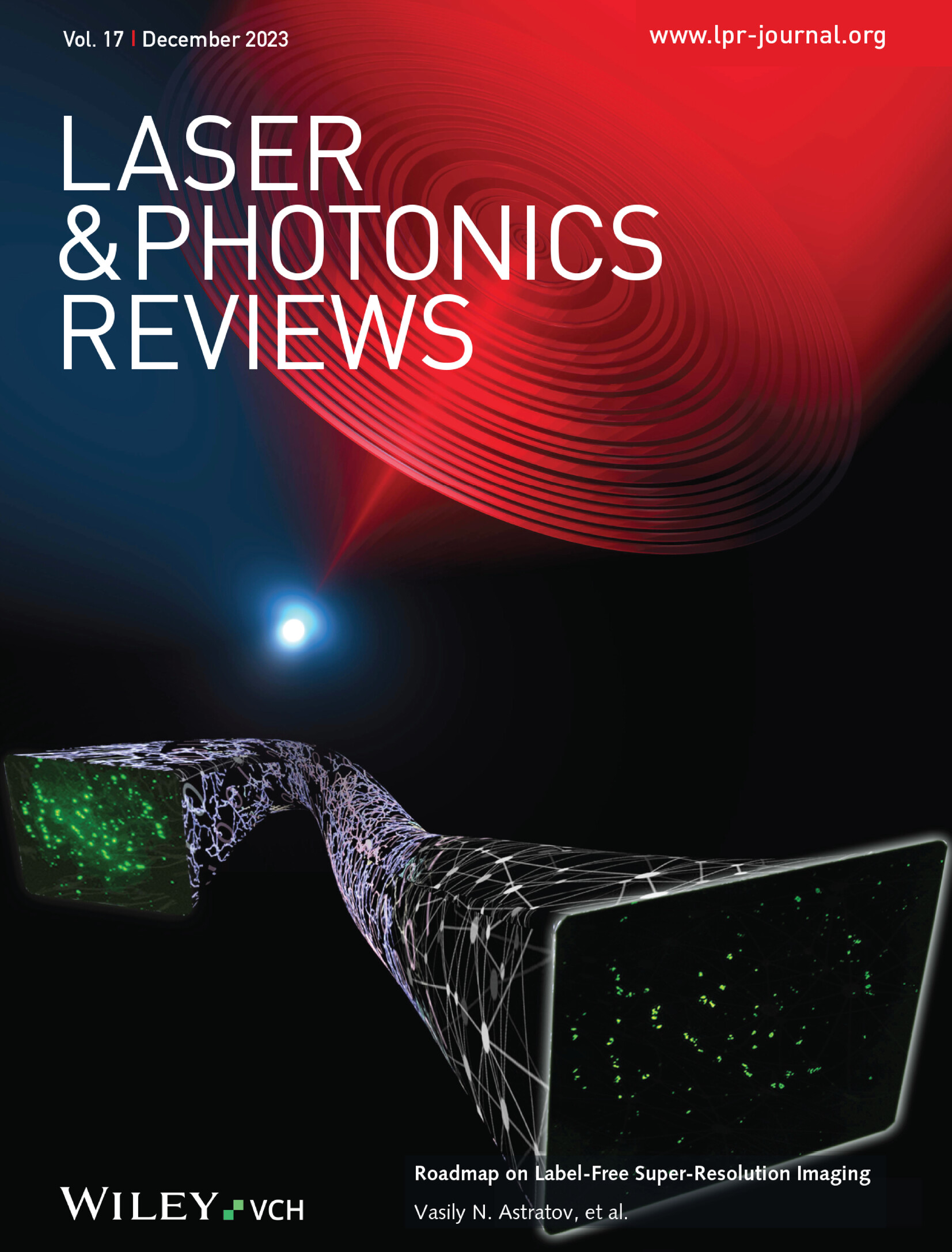Regulating Broadband Near‐Infrared Mechanoluminescence via Energy‐Level Engineering for Potential Biomechanical Imaging
IF 9.8
1区 物理与天体物理
Q1 OPTICS
引用次数: 0
Abstract
Near‐infrared mechanoluminescent (NIR ML) materials have attracted attention due to their advantages, such as in situ and real‐time monitoring of biomechanical information in vivo. However, most ML materials are focused on the UV–vis light range, which limits their potential applications in the biological field. In this work, a broadband NIR ML material Ca

通过能级工程调节宽带近红外机械发光,实现潜在的生物力学成像
近红外机械发光(NIR ML)材料具有原位和实时监测体内生物力学信息等优点,因此备受关注。然而,大多数近红外机械发光材料都集中在紫外-可见光范围,这限制了它们在生物领域的潜在应用。在这项工作中,通过化学共取代和重掺杂 Cr3+ 成功制备了一种宽带近红外 ML 材料 Ca2YGa3Ge2O12: 0.10Cr3+ (CYGG: 0.10Cr3+)。密度泛函理论(DFT)计算确定了材料中的缺陷类型,由间隙氧(iO′′)和反位元缺陷(CaY′ - YCa°)形成的复合缺陷在近红外 ML 中占主导地位。Cr3+ 离子作为调节能级的电子桥,成为开启 Nd3+ 离子近红外 ML 的关键。最后,基于 CYGGG:0.10Cr3+ 和 CYGGG:0.10Cr3+, 0.01Nd3+ 的优异 ML 特性,ML 复合材料可以在应力负荷下穿透不同成分/厚度的猪肉组织。这项工作有望实现生物组织应力成像,为近红外 ML 材料的生物应用提供一条新途径。
本文章由计算机程序翻译,如有差异,请以英文原文为准。
求助全文
约1分钟内获得全文
求助全文
来源期刊
CiteScore
14.20
自引率
5.50%
发文量
314
审稿时长
2 months
期刊介绍:
Laser & Photonics Reviews is a reputable journal that publishes high-quality Reviews, original Research Articles, and Perspectives in the field of photonics and optics. It covers both theoretical and experimental aspects, including recent groundbreaking research, specific advancements, and innovative applications.
As evidence of its impact and recognition, Laser & Photonics Reviews boasts a remarkable 2022 Impact Factor of 11.0, according to the Journal Citation Reports from Clarivate Analytics (2023). Moreover, it holds impressive rankings in the InCites Journal Citation Reports: in 2021, it was ranked 6th out of 101 in the field of Optics, 15th out of 161 in Applied Physics, and 12th out of 69 in Condensed Matter Physics.
The journal uses the ISSN numbers 1863-8880 for print and 1863-8899 for online publications.

 求助内容:
求助内容: 应助结果提醒方式:
应助结果提醒方式:


